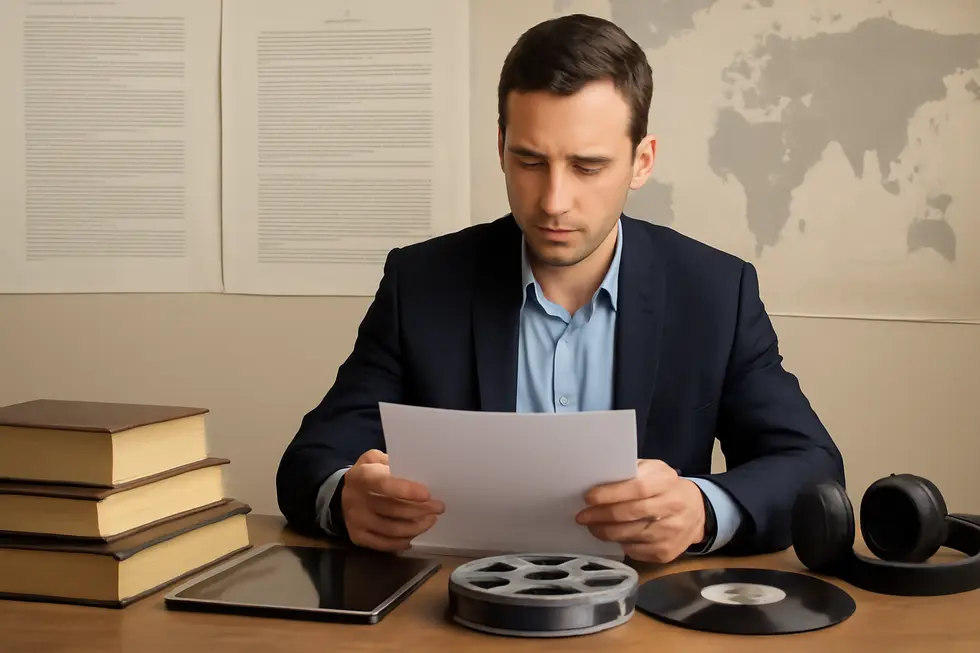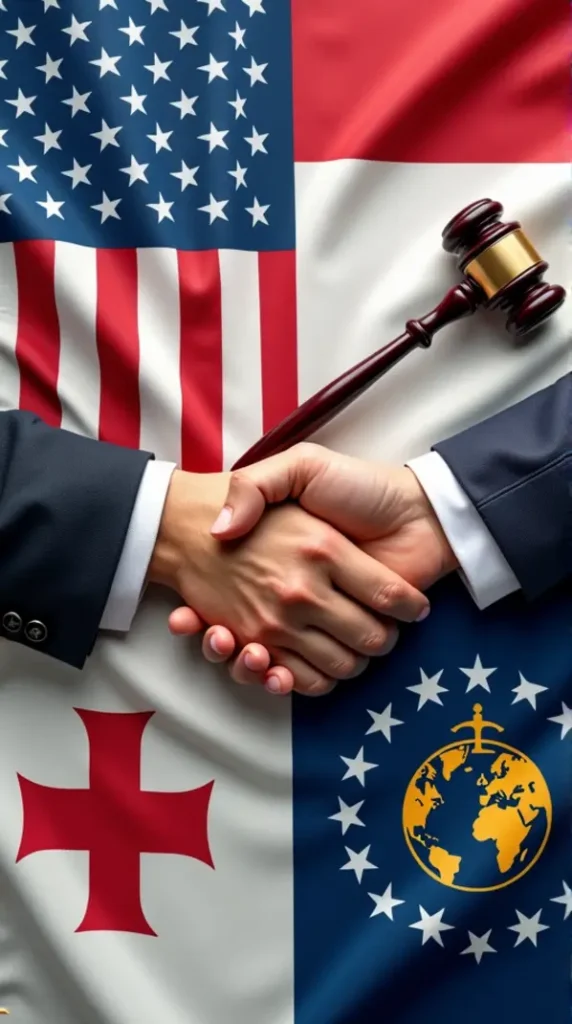Introduction
Copyright protection plays a crucial role in safeguarding the intellectual property that businesses rely on daily. Understanding how long copyright lasts—the copyright years—is essential for business owners to manage risks, leverage creative assets, and avoid infringement. Copyright duration varies significantly depending on the type of work, jurisdiction, and special legal provisions, making the subject complex yet vital. This guide sheds light on the critical aspects of copyright years, starting with literary and artistic works, then exploring sound recordings, typographical arrangements, films, and the particular nuances of U.S. law. Finally, it addresses international trends in copyright extensions and exceptions, emphasizing how these shifts balance creators’ rights with public interest. Armed with this knowledge, business owners can make informed decisions regarding licensing, content creation, and intellectual property strategies.
Tables of Contents
Chapter 1: Copyright Years for Literary and Artistic Works: Duration and Jurisdictional Variations
- Global Perspectives on Copyright Lengths for Literary and Artistic Creations: Navigating Diverse Legal Standards
- From Early Printing Patents to International Treaties: How History Shaped Copyright Terms for Literary and Artistic Works
- Navigating Copyright Duration for Unique Authorship: Orphan Works, Anonymity, and Collaboration
Chapter 2: Navigating Sound Recording Copyrights: Legal Complexities Across Jurisdictions
- Jurisdictional Variations and Legal Nuances Defining Copyright Terms for Sound Recordings
- Understanding International Complexity in Sound Recording Copyright Durations
- The Nuances of Licensing and Economic Impact Across Jurisdictions in Sound Recording Copyrights
Chapter 3: Copyright Years for Typographical Arrangements and Films: Specialized Terms
- Understanding the Unique Durations Protecting Typographical Layouts and Film Contributions
- Navigating International Copyright Durations for Typographical Arrangements and Films
- Distinct Copyright Durations and Exceptions for Typographical Arrangements and Films
Chapter 4: Copyright Years in U.S. Law: Works for Hire and Historical Provisions
- Understanding the Duration of U.S. Copyright: Works for Hire and Their Legal Framework
- Tracing the Roots and Evolution of Copyright Terms for Works Made for Hire in U.S. Law
- Navigating Special Categories and Exceptions in U.S. Copyright Duration and Ownership
Chapter 5: Copyright Years Extensions and Exceptions: International Trends and Public Interest Balances
- Navigating the Legal Balance Between Copyright Extensions and Public Access to Culture
- Navigating AI and Digital Content: Evolving Copyright Terms Amid Technological Innovation
- Navigating Innovation and Access: Economic and Geopolitical Impacts of Copyright and Patent Term Extensions
Chapter 1: Copyright Years for Literary and Artistic Works: Duration and Jurisdictional Variations
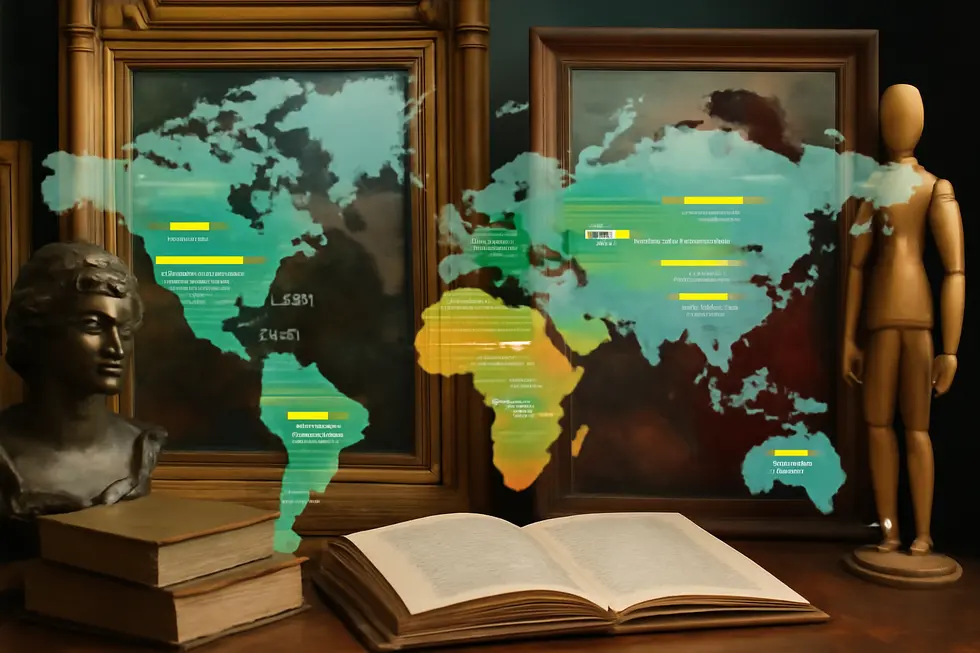
1. Global Perspectives on Copyright Lengths for Literary and Artistic Creations: Navigating Diverse Legal Standards
Copyright duration for literary and artistic works is shaped by a mosaic of legal traditions and international agreements, resulting in notable jurisdictional differences. Most countries follow a general framework based on the life of the author plus a set number of years, typically 50 or 70. For instance, all European Union member states adhere to Directive 2006/116/EC, which standardizes protection at 70 years beyond the author’s death. This term similarly applies to joint authorship, counting from the death of the last surviving contributor.
Beyond the EU, protections differ. Some countries, like Venezuela and Zimbabwe, limit copyright to life plus 60 or 50 years, respectively, while others such as Yemen opt for more abbreviated terms coupled with unique provisions, including state ownership after expiration. Uruguay and Uzbekistan align with the life plus 70-year model, reflecting a common international trend. These variations also extend to specific categories; EU law, for example, distinguishes anonymous works, audiovisual productions, performers’ rights, and producers of sound recordings, assigning each tailored durations to reflect their creative and commercial contexts.
International treaties, including the Universal Copyright Convention, set minimum protection baselines to harmonize global standards, though individual countries often implement longer terms. Additionally, evolving media types and the digital landscape have prompted some jurisdictions to reconsider traditional durations and enforcement approaches to better safeguard contemporary creative expressions.
Such diversity underscores the complexity authors and users face in understanding copyright terms across borders. Staying informed about these differences is essential, especially when works cross international lines. For a deep dive into the specifics of copyright durations by country and work type, refer to comprehensive data at UK Data Service’s copyright resource. This nuanced picture of copyright term variation highlights how national laws and international norms intersect to shape the legal protection of literary and artistic works.
For a foundational understanding of copyright principles related to various creative forms, see this detailed overview of copyright protection for books, movies, and songs.
2. From Early Printing Patents to International Treaties: How History Shaped Copyright Terms for Literary and Artistic Works
The duration of copyright for literary and artistic works is deeply rooted in a complex historical and legal evolution that balances creators’ rights with public access. Initially, during the 15th and 16th centuries, what we now recognize as copyright began as royal monopolies granting printing privileges. These rights were less concerned with author ownership and more with controlling content distribution and generating revenue for ruling powers. No lasting rights vested in authors themselves, as these privileges were limited and primarily a tool of state control.
This landscape shifted dramatically with the 1710 Statute of Anne in England, the first significant statute that recognized authors as primary rights holders. It established a fixed copyright term of 28 years, after which works would enter the public domain, fostering knowledge dissemination. This statute laid the conceptual foundation for modern copyright, emphasizing not only economic incentives for authors but also moral rights tied to authorship.
Building on the Statute of Anne, national laws such as the U.S. Copyright Act of 1790 adopted an author-focused framework, initially granting 14-year terms with renewals. Over the 18th and 19th centuries, copyright terms gradually extended in many jurisdictions to better protect creators’ economic interests amidst growing cultural industries.
Internationally, landmark treaties like the Berne Convention of 1886 introduced the principle of national treatment, requiring member states to protect foreign works as they do domestic ones. It set a minimum duration standard linked to the author’s lifetime plus additional years, promoting global consistency. The Universal Copyright Convention (1952) further complemented these standards, albeit with some allowance for formalities absent in Berne. Today, Berne’s provisions—expanded and reinforced in modern statutes—prevail, reflecting an intricate balance between incentivizing creativity and ensuring eventual public access.
Modern copyright laws commonly protect works for the author’s life plus 70 years, mirroring increased longevity and commercial value in creative works. Meanwhile, digital advancements challenge enforcement but have not fundamentally altered statutory terms.
Understanding this historical evolution is key to grasping why copyright years vary and how they sustain the delicate equilibrium between exclusive rights and cultural enrichment. For deeper insights into copyright protection across different media, see copyright protection for books, movies, and songs.
More extensive country-by-country duration details are available through authoritative sources like the UK Data Service’s comprehensive guide: https://ukdataservice.ac.uk/learning-hub/research-data-management/rights-in-data/copyright/
3. Navigating Copyright Duration for Unique Authorship: Orphan Works, Anonymity, and Collaboration
Copyright duration for literary and artistic works involves special considerations when authorship is unclear or shared, impacting both protection terms and user access. Orphan works, whose rights holders cannot be identified or located despite diligent searches, present a significant challenge. Although no universal legal exemption allows unrestricted use, some jurisdictions have developed limited provisions enabling use after a good-faith effort to locate owners, often tempered by fair use or similar exceptions. The cautious approach reflects the risk of infringement versus the public interest in access.
For anonymous or pseudonymous works, copyright protection does not hinge on the life of the author but rather follows a fixed term, commonly 95 years from publication or 120 years from creation in many laws such as U.S. statutes. This extended fixed period compensates for the uncertainty surrounding the creator’s identity, ensuring long-term protection without personalized duration.
In cases of collaborative authorship, where multiple creators contribute jointly, copyright duration generally extends to 70 years after the death of the last surviving author. This principle protects all contributors’ interests collectively, as each co-author holds rights both individually and as part of the whole. Joint ownership often requires negotiations regarding licensing and enforcement.
These categories intersect with broader legal principles like fair use, which allows limited unlicensed usage for purposes such as education or critique, balancing creator rights with societal benefit. Educational exemptions also permit certain performances or displays without infringement liability. By adapting copyright terms for these special authorship situations, the law strives to preserve creator rights while facilitating lawful public use.
For a deeper understanding of copyright protections relevant to creative works in various contexts, consider exploring copyright protection for books, movies, and songs. Further detailed, jurisdiction-specific copyright durations can be found at official resources such as the UK Data Service copyright guide.
Chapter 2: Navigating Sound Recording Copyrights: Legal Complexities Across Jurisdictions
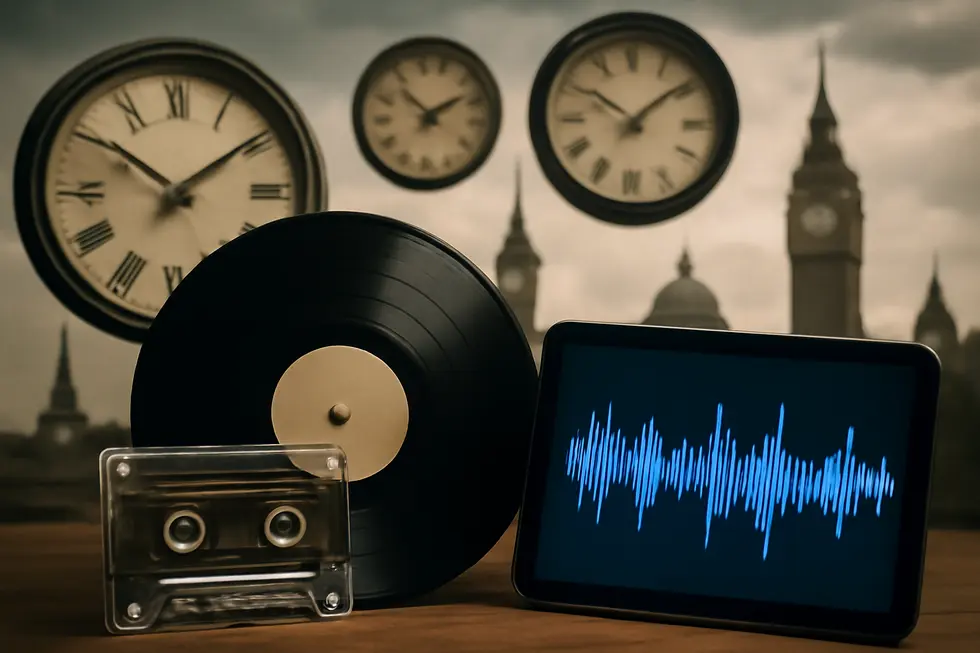
1. Jurisdictional Variations and Legal Nuances Defining Copyright Terms for Sound Recordings
Copyright protection for sound recordings exemplifies a web of legal intricacies, differing markedly across jurisdictions and shaped by historical, legislative, and international factors. In the United States, the specificity of the Music Modernization Act of 2018 notably distinguishes sound recordings fixed before February 15, 1972. These earlier works enjoy layered protection based on their publication dates—lasting up to 110 years—ensuring that even vintage analog recordings maintain legal safeguards well beyond traditional copyright spans. Conversely, sound recordings created after this date adhere to standard copyright terms, often extending to 70 years after the author’s death or governed by corporate authorship rules where applicable. Internationally, these temporal boundaries vary widely. Many countries adopt a “life of the author plus 70 years” standard, yet others establish fixed durations tied directly to fixation or publication dates, such as 50 or 75 years, reflecting different cultural and legal priorities. Some territories, like the Marshall Islands, diverge further, opting out of traditional copyright protections for sound recordings entirely, underscoring the global patchwork of approaches. The Berne Convention, while fostering broad harmonization among authors’ works, allows unique flexibilities for sound recordings, allowing jurisdictions to tailor protections to national interests. Critical too is the distinction between automatic copyright upon fixation versus formal registration requirements, the latter common in the U.S. for enforcement. This nuanced legal topography affects licensing, public performances, and how recordings transition into the public domain, emphasizing the importance of considering both the location of use and the creation period when navigating rights. For those seeking to understand these complex temporal and legal parameters in more depth, resources such as detailed global copyright duration listings offer comprehensive insights. Similarly, exploring foundational aspects of copyright protections provides deeper context on managing rights in creative works, which can be valuable for sound recordings as well. Learn more about copyright protection basics here. This multifaceted legal framework underscores the care needed in managing sound recording copyrights across geographic and temporal divides, highlighting how jurisdictional and historical factors critically influence the lifespan and enforcement of rights.
2. Understanding International Complexity in Sound Recording Copyright Durations
International Variations in Sound Recording Copyright Terms: Navigating a Complex Landscape
The copyright duration for sound recordings exhibits significant international variation, shaped by diverse legal traditions and nuanced treaty implementations. Unlike literary and artistic works, which often adhere to a “life plus 70 years” model, sound recordings typically receive protection based on fixed terms measured from the date of creation or publication. For many countries, a copyright term of 50 years from the recording date remains standard, as seen in the UK, while others, such as the European Union, extend protection to 70 years, starting from first fixation or public release. These variations reflect each jurisdiction’s unique approach to balancing rights holders’ interests with public access.
Complicating matters further, some nations apply life-based terms, mostly for the underlying musical compositions rather than the recordings themselves. For example, France utilizes “life plus 70 years” for musical works, layering additional terms for posthumous releases or anonymous works. This hybrid system illustrates the challenge of reconciling different types of intellectual property tied to music and sound.
International treaties like the Berne Convention and TRIPS establish baseline protections but grant countries flexibility in setting exact durations, resulting in a patchwork of rules. The United States, with its distinct history—such as the now-defunct manufacturing clause and special provisions for pre-1972 recordings—further highlights the complexity. Additionally, exceptions and extensions abound, with some territories granting longer terms for specific categories such as posthumous or anonymous recordings.
For rights holders, creators, and users, these geographic differences carry critical practical implications, particularly when licensing music across borders. Negotiating synchronization, mechanical, or performance rights demands careful attention to each territory’s terms, ensuring compliance and avoiding infringement risks. This mosaic of copyright durations underscores the importance of specialized legal insight when managing sound recording rights on an international scale.
For a detailed list of country-specific copyright durations, resources such as the UK Data Service provide invaluable guidance. Moreover, understanding these nuances supports more informed protection of creative works, complementing broader efforts described in articles on copyright protection for books, movies, and songs.
3. The Nuances of Licensing and Economic Impact Across Jurisdictions in Sound Recording Copyrights
Commercial licensing of sound recordings is a multifaceted process deeply intertwined with the complexities of copyright duration and jurisdictional differences. Key licenses include mechanical licenses for reproductions, synchronization licenses for pairing music with visual content, master licenses for using the original sound recording, and public performance licenses for playing recordings publicly. Navigating these requires understanding not only the type of rights owned but also their territorial limitations and permitted uses, which vary widely by country.
Economically, licensing generates royalty income subject to ordinary income tax, with added layers of complexity when crossing borders due to withholding taxes. Distinguishing licensing revenue from outright intellectual property sales is crucial for tax purposes, as sales invoke capital gains tax, provided the transfer is complete and genuine. This distinction influences negotiation strategies and financial planning in managing sound recordings.
The duration of copyright protection significantly shapes licensing strategies. In the U.S., sound recordings fixed prior to February 15, 1972, enjoy a distinct and extended term, while later works fall under standard copyright law with different protections. Moreover, digital public performance rights in the U.S. are administered separately from terrestrial radio, impacting which licenses are necessary. Conversely, other jurisdictions may not grant the same digital rights or public performance frameworks, requiring tailored licensing approaches.
A major complexity lies in separating rights to the sound recording from those to the underlying musical composition, each demanding separate licenses. Additionally, geographic restrictions and platform-specific considerations, like digital versus analog rights, further complicate licensing. Enforcement through copyright registration and legal actions is often essential to secure statutory damages when infringement occurs.
Understanding these variables is critical for businesses and rights holders to optimize licensing deals, comply with diverse laws, and manage economic outcomes effectively. For more detailed guidance on licensing and registration strategies, see this comprehensive guide on copyright protections for creative works. External authoritative resources like the LegalZoom overview on sound recording copyright registration provide further insights into enforcement and rights management.
Chapter 3: Copyright Years for Typographical Arrangements and Films: Specialized Terms
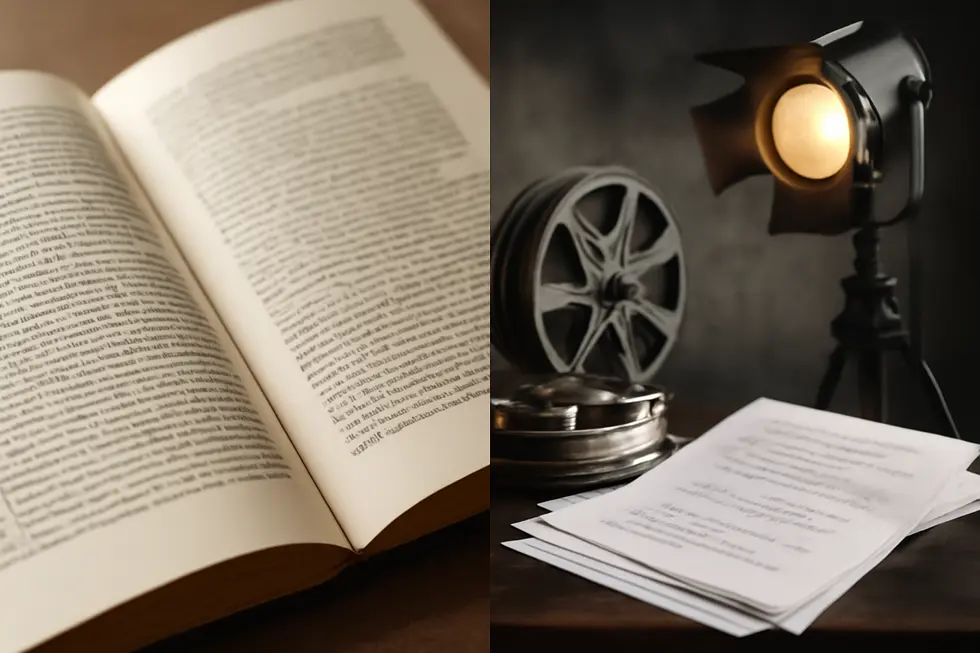
1. Understanding the Unique Durations Protecting Typographical Layouts and Film Contributions
Understanding Copyright Duration for Typographical Arrangements and Films
Typographical arrangements encompass the creative layout and presentation of published editions, distinct from the literary content itself. Copyright protection for these arrangements generally lasts for a fixed term of 25 years from the date of first publication. This relatively brief period recognizes the specific, often commercial, nature of typographical creativity while balancing public access to published works.
By contrast, the copyright term for films reflects the collaborative efforts of several key contributors. Protection extends until 50 years after the death of the last surviving principal contributor, which may include the director, screenplay author, dialogue author, or composer of music specially created for the film. This life-plus-term approach acknowledges the diverse creative inputs integral to a film’s identity, rather than relying on a fixed publication date. It also highlights the complexity in determining copyright duration for audiovisual works.
These distinctions illustrate how copyright law tailors protection based on the nature of the artistic contribution. While typographical arrangements focus on the visual design and are granted a straightforward, fixed term, films rely on a longevity measure tied to creators’ lifespans, reflecting the breadth of artistic roles involved.
Jurisdictions such as the UK and Hong Kong illustrate these principles, adhering to international standards but allowing for specialty terms that respect each work’s creative context. This approach ensures that both typographical creativity and the multifaceted artistry of films receive appropriate recognition, while providing clarity on the duration of protection.
For further insights into the nuances of copyright across different types of works, exploring copyright protection for books, movies, and songs offers practical guidance. Additionally, the UK Data Service provides detailed, jurisdiction-specific information on copyright durations, aiding creators and users alike in understanding these important terms: https://ukdataservice.ac.uk/learning-hub/research-data-management/rights-in-data/copyright/
2. Navigating International Copyright Durations for Typographical Arrangements and Films
Copyright protection for typographical arrangements and films reflects a nuanced legal landscape shaped by international treaties and national regulations. Typographical arrangements—essentially the layout and typesetting of printed works—typically benefit from shorter protection periods compared to other creative works. For instance, the United Kingdom and Nauru grant rights for 25 years from publication, recognizing the technical, rather than artistic, nature of these creations. In contrast, Ireland, aligned with European Union directives, extends this period to 50 years after the work’s public availability, demonstrating regional harmonization efforts within the EU.
Films receive longer terms owing to their complex authorship and economic significance. South Africa applies a dual system, offering 50 years of protection either from the date of first publication or creation if unpublished. Many countries observing the Berne Convention and TRIPS Agreement uphold a minimum protection of 50 years post-publication, though some jurisdictions mandate longer terms reflective of local copyright statutes. This extension often accounts for the multiple contributors involved in a film’s production, such as directors, screenwriters, and composers.
Underlying these durations are international legal frameworks that ensure minimum standards. The Berne Convention sets foundational protections, advocating life-plus-50-years for authors’ rights, which indirectly influence typographical arrangements and films. The TRIPS Agreement reinforces these minimums globally, while the WIPO Copyright Treaty encourages harmonization across member states, aligning diverse national laws. Nevertheless, countries retain latitude to tailor durations based on cultural and economic priorities, producing notable variation worldwide.
The specific treatment of typographical arrangements and films illustrates how copyright law balances technical innovation, creative contribution, and public access. For a deeper understanding of copyright duration across different nations and works, consult comprehensive resources such as Wikipedia’s detailed copyright length list and explore insights on copyright protection for books, movies, and songs.
3. Distinct Copyright Durations and Exceptions for Typographical Arrangements and Films
Copyright protection varies significantly depending on the type of creative work, with typographical arrangements and films embodying notable exceptions to the general rules governing literary and artistic works. Typographical arrangements—essentially the layout and design of published editions—are typically granted a relatively brief copyright term. In many jurisdictions, such as the UK and Fiji, this term extends for 25 years from publication or from the end of the calendar year in which the work first becomes available to the public. Some countries like Ireland have variations, sometimes offering protection up to 50 years, reflecting national legal updates or interpretations.
Films, on the other hand, and related sound recordings occupy a middle ground in copyright duration. Generally, films are protected for 50 years from creation or first publication in places like the UK and Hong Kong. This contrasts with the longer terms often seen in traditional literary and artistic works, where copyright typically endures for the life of the creator plus 70 years, following the standards of many jurisdictions including much of Europe and North America.
This tiered approach acknowledges the differing nature and market demands of each medium. While typographical arrangements’ protection is time-limited to balance publisher investments and public access, films receive extended rights reflecting their complex production and collaborative authorship. Moreover, special exceptions exist to safeguard public interest. Concepts like fair dealing or fair use permit limited, lawful uses—for research or accessibility—without the need for permission, and treaties such as the Marrakesh Treaty ensure adaptations for persons with disabilities can be made legally.
It is also important to recognize that copyright ownership and physical ownership of copies may not coincide, especially in commissioned works or collaborative film projects, complicating rights management further. For comprehensive details on these distinct copyright durations and exceptions, consulting authoritative sources such as the UK Data Service on Copyright Duration is recommended. Understanding these specialized terms helps clarify the nuanced landscape of intellectual property protections beyond general copyright rules.
For further guidance on protecting various creative works through copyright, explore the basics of copyright law in business.
Chapter 4: Copyright Years in U.S. Law: Works for Hire and Historical Provisions
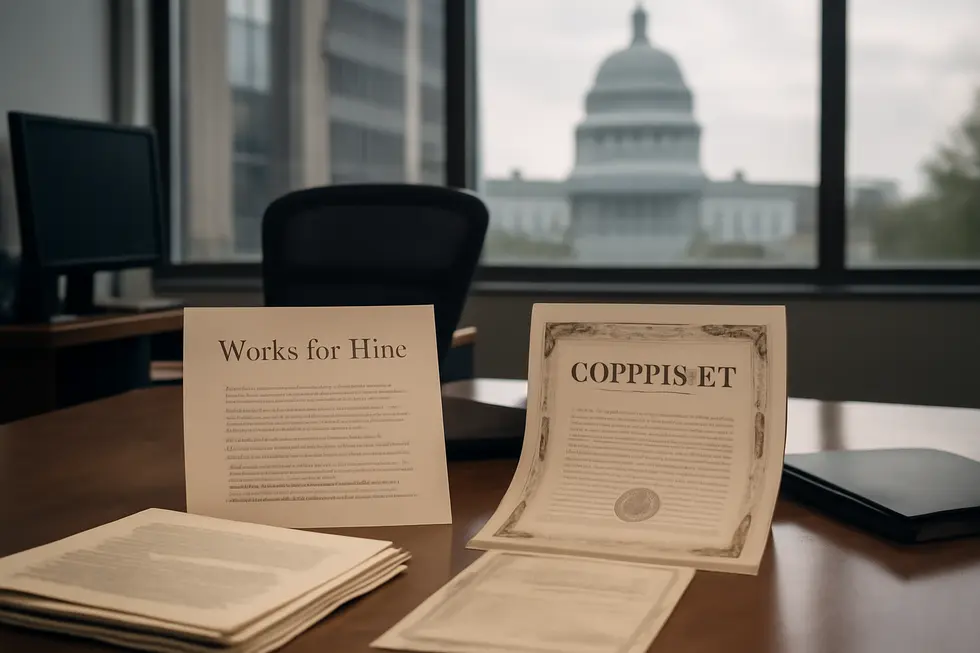
1. Understanding the Duration of U.S. Copyright: Works for Hire and Their Legal Framework
The duration of copyright protection under U.S. law is fundamentally shaped by the nature of the authorship and the date when the work was created. For works created by individual authors after January 1, 1978, the copyright term extends for the life of the author plus 70 years, providing a lengthy period for heirs or assignees to benefit. However, works made for hire occupy a distinct legal category that reflects the different circumstances of corporate authorship. In these cases—including anonymous or pseudonymous works—the copyright lasts for either 95 years from publication or 120 years from creation, whichever expires first. This dual-term structure ensures that employers or commissioning parties receive a fixed, reliable period of protection, recognizing their investment in the work’s creation rather than its creator’s lifespan.
These provisions are detailed in Title 17 of the United States Code (§ 302), a section considerably shaped by legislative amendments such as the Copyright Term Extension Act. This Act extended existing terms to harmonize U.S. copyright durations with international standards, enhancing consistency and predictability. Prior to 1978, copyright terms followed a different system based primarily on publication dates and renewal registrations, which are now largely superseded but remain relevant for certain legacy works.
Once the specified term expires—whether life plus 70 years or the maximum years from creation or publication—the work enters the public domain, freeing it from copyright restrictions. This balance supports creators and corporate interests while eventually allowing public access to cultural materials. To navigate the complex distinctions and benefit fully from copyright protection, a clear understanding of these durations and their applicability is crucial.
For more on how copyright protects creative content across forms, see this resource on copyright protection for books, movies, and songs.
Detailed country-specific copyright information is also available at UK Data Service’s comprehensive guide.
2. Tracing the Roots and Evolution of Copyright Terms for Works Made for Hire in U.S. Law
The origins of U.S. copyright law trace back to the Copyright Act of 1790, which granted authors exclusive rights to their creations for an initial term of 14 years, renewable once for an additional 14 years, totaling a maximum of 28 years. This early framework, inspired by England’s Statute of Anne (1710), introduced the revolutionary idea that copyright protection was not perpetual but rather limited in time, intending to balance creators’ interests with eventual public access.
As the creative landscape expanded, legislative adjustments extended copyright terms. The Copyright Act of 1831 lengthened the initial term to 28 years, with a 14-year renewal, bringing protection up to 42 years. Subsequent amendments further extended terms to accommodate new forms of expression and economic realities.
Distinct from individual authorship, the legal concept of works made for hire emerged to address creations produced by employees or commissioned parties under specific agreements. In these cases, the employer or commissioning entity is recognized as the legal author and copyright holder from the moment of creation, significantly impacting the duration of copyright protection. Unlike traditional author-based terms, works made for hire carry copyright durations of 95 years from publication or 120 years from creation, whichever expires sooner. This reflects the law’s adaptation to corporate and institutional authorship, ensuring clarity in ownership and duration.
Alongside these changes, copyright registration evolved from a largely voluntary act to a critical procedural step in securing and enforcing copyright protections.
These developments reveal a clear legislative trajectory: from short, author-centric terms to complex provisions accommodating diverse authorship types and longer protections. This historical context highlights how U.S. copyright law continuously strives to balance creators’ rights, corporate interests, and public domain access.
For deeper exploration of the historical timeline, the following provides a comprehensive overview: https://www.youtube.com/watch?v=qIWehlqe5KQ
Additional insights into the foundational principles of copyright protection can be found in the discussion on the basics of copyright law.
3. Navigating Special Categories and Exceptions in U.S. Copyright Duration and Ownership
U.S. copyright law distinguishes certain special categories and exceptions that significantly affect the duration and ownership of copyright, particularly in the context of works made for hire and historical provisions. Unlike standard works where copyright lasts for the life of the author plus 70 years, works made for hire are treated differently because the employer or commissioning party is considered the legal author. The copyright term for these works extends to 95 years from publication or 120 years from creation, whichever is shorter. A work qualifies as a work made for hire if it is created by an employee within their employment scope or if it meets specific statutory criteria for independent contractors, thus underscoring the importance of the work’s origin in determining ownership and duration.
Historical provisions further complicate copyright terms for works created before January 1, 1978. These works often fall under transitional rules that can involve complex calculations based on publication status, renewal, and whether the authorship is anonymous or pseudonymous. Notably, unpublished anonymous or pseudonymous works may enjoy protection lasting up to 120 years from creation, reflecting legislative attempts to balance protection with timely entry into the public domain.
Additionally, while not affecting ownership or term, the fair use exception under Section 107 allows for limited use of copyrighted works without permission. This doctrine permits certain uses like education, research, or commentary based on a four-factor test: purpose, nature, amount used, and market impact. Such exceptions highlight the U.S. copyright system’s nuanced approach to balancing creators’ rights with public interest.
These special provisions ensure clarity in complicated ownership scenarios and adapt copyright terms to the evolving nature of creative work. For a deeper understanding of how these complexities fit within broader copyright protections, see the overview on copyright protection for books, movies, and songs. Legal specifics and case law examples about joint authorship and work-for-hire doctrines are well summarized in resources like Justia’s intellectual property outlines. More detailed legal charts for pre-1978 works can be found in academic guides such as those provided by Cornell University.
For legal reference and further detailed guidance on these categories, consult the Hoover Library Copyright Terms & Work-for-Hire overview.
Chapter 5: Copyright Years Extensions and Exceptions: International Trends and Public Interest Balances
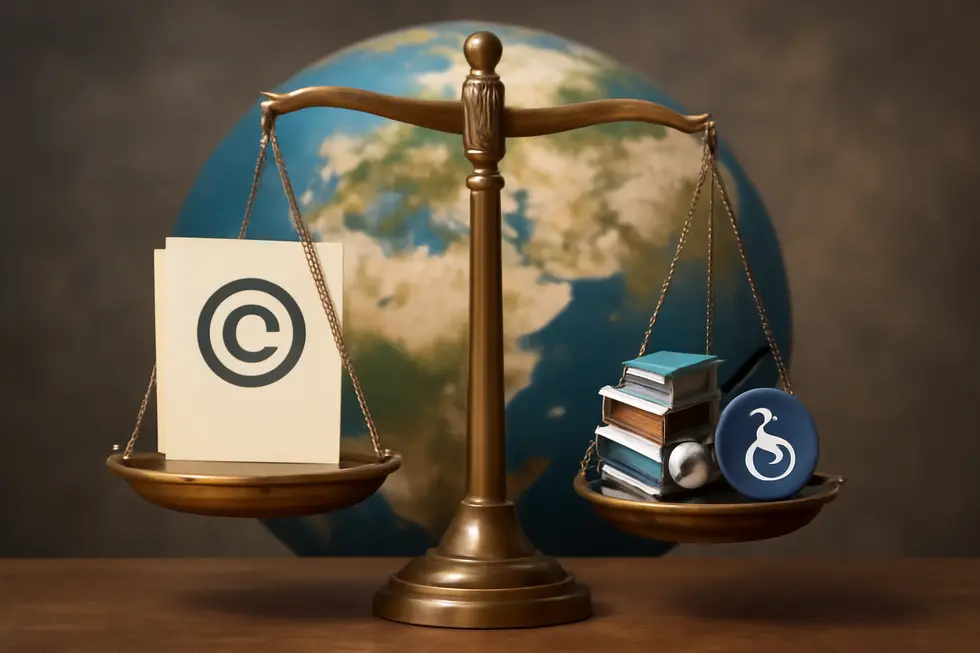
1. Navigating the Legal Balance Between Copyright Extensions and Public Access to Culture
Balancing copyright extensions against exceptions requires a nuanced legal framework that safeguards creators’ rights while promoting public interest in cultural access. Copyright grants exclusive rights that incentivize creation, yet it also recognizes the necessity of limitations and exceptions—such as fair use or fair dealing—to allow unlicensed, socially beneficial uses for education, research, criticism, and scholarship. These exceptions prevent copyright from becoming an absolute monopoly, ensuring knowledge and culture remain accessible.
Internationally, the TRIPS Agreement’s three-step test governs this balance by permitting exceptions only when they do not conflict with normal exploitation or unreasonably harm rights holders. This principle shapes national laws, including those that apply fair use in a flexible, case-by-case manner by weighing factors like the purpose of use, amount employed, and market impact. Extensions and renewals provide creators prolonged economic protection, yet excessive durations risk stifling public domain growth, limiting cultural participation and creativity over time.
Legal uncertainties, particularly around concepts like de minimis use in music sampling, reveal how fragile this balance can be. If exceptions are too narrow, educational institutions and artists face barriers; conversely, overly broad exceptions could undermine incentives for creation. Consequently, copyright law strives for a dynamic equilibrium—protecting original works while fostering innovation and cultural development. This interplay influences how societies share and evolve their cultural heritage, underlining the importance of measured legislative and judicial approaches.
Understanding this dynamic is crucial for anyone navigating intellectual property, as it directly impacts access to cultural resources and creative freedom. For more on foundational copyright principles and rights, see this comprehensive guide on the basics of copyright law.
For detailed guidance on international legal standards, visit the official explanation of the TRIPS three-step test: https://ukdataservice.ac.uk/learning-hub/research-data-management/rights-in-data/copyright/
2. Navigating AI and Digital Content: Evolving Copyright Terms Amid Technological Innovation
Technological advancements, particularly in artificial intelligence (AI) and digital content creation, are reshaping the landscape of copyright duration and exceptions globally. While traditional copyright frameworks have long relied on human authorship as a prerequisite for protection, the rise of AI challenges this foundation. Currently, purely AI-generated works do not qualify for copyright under U.S. law, which mandates direct human originality. However, if a human author contributes significant creative input—whether by instructing the AI, curating selections, or modifying outputs—those works may be eligible for protection. This evolving criterion highlights the nuanced boundary between human and machine creativity that copyright systems must address.
Internationally, responses to AI’s impact vary. The European Union’s Digital Single Market Directive introduces specific exceptions for text and data mining, facilitating legitimate research uses without direct licensing. Yet, these exceptions stop short of broadly permitting unlicensed AI training on copyrighted materials, especially for commercial exploitation. Many jurisdictions wrestle with clarifying fair use, research, and educational exceptions concerning AI, as no comprehensive global consensus exists that fully authorizes such uses today.
Digital content management amid extended copyright years underscores the need for sophisticated ownership verification, licensing strategies, and enforcement practices. As AI-generated and digitally transformed works proliferate, effective governance mechanisms become vital to balance creators’ rights and public interest. Authorities in various countries have initiated inquiries seeking to harmonize copyright terms with rapid technological change, emphasizing innovation while safeguarding rights.
In this dynamic environment, lawmakers continue to explore reforms that reconcile extended copyright years with digital realities and AI’s creative potential. Understanding these international trends is essential for anticipating ongoing shifts in copyright’s scope and the practical administration of rights in the digital age.
For insights on AI-related copyright law developments in the U.S., see the 2025 report by the U.S. Copyright Office. For a detailed exploration of copyright exceptions for research and data mining in Europe, the European Parliament’s 2025 study offers comprehensive analysis. Additionally, for an overview of copyright protection fundamentals relevant to these discussions, refer to basics of copyright law for businesses.
3. Navigating Innovation and Access: Economic and Geopolitical Impacts of Copyright and Patent Term Extensions
The extension of copyright and patent terms sits at a complex crossroads of economic incentives, public health, and cultural access. Patent term extensions, particularly in pharmaceuticals, serve as crucial compensations for time lost in regulatory review processes. For instance, the United States’ Hatch-Waxman Act permits up to five extra years of market exclusivity, ensuring companies can recoup significant research and development investments. Meanwhile, countries like China tailor patent extensions to priority areas such as “new drugs” not previously marketed domestically or abroad, reflecting national strategic interests in fostering innovation and controlling market dynamics.
Such extensions undeniably promote innovation by guaranteeing exclusive rights for longer periods, but they also delay competition from generics, contributing to higher drug prices and restricted public access to essential medicines. This duality underscores a tension between rewarding innovation and safeguarding public health interests.
Similarly, copyright term extensions grant creators and rights holders prolonged control over their works, incentivizing further investment and cultural production. However, longer terms also postpone the entry of works into the public domain—an essential space for educational advancement, cultural growth, and further creative endeavors. Particularly in less economically developed regions, delayed public access can limit the availability of affordable knowledge and cultural resources.
Internationally, efforts toward harmonizing these terms, as through agreements like TRIPS, aim to standardize protections but can generate friction between developed economies seeking stronger rights and developing nations advocating for broader access to medicines and cultural content. National policies, influenced by geopolitical and economic priorities, reflect diverse approaches—for example, differences in utility model patents or restrictions on patent term extensions highlight strategic balances between domestic innovation incentives and global trade considerations.
This intricate interplay demands careful policymaking to ensure that incentives for innovation do not overshadow public health and cultural accessibility. For businesses interested in understanding the nuances of intellectual property protections, exploring the benefits of copyright registration can provide crucial insights into balancing these competing interests.Learn more about the benefits of copyright registration in business.
For further details on country-specific durations and regulations, official sources such as the UK Data Service offer comprehensive guidance: https://ukdataservice.ac.uk/learning-hub/research-data-management/rights-in-data/copyright/
Final thoughts
Understanding copyright years is vital for business owners to protect and leverage their intellectual property effectively. From the foundational life-plus-70-year terms for literary and artistic works to the specialized durations for sound recordings, typographical arrangements, films, and corporate works, copyright durations vary widely by type and jurisdiction. In addition, ongoing international trends toward extending copyright terms and integrating public interest exceptions add layers of complexity. Equipped with this knowledge, business owners can navigate rights management strategically, avoid infringement risks, align licensing opportunities, and remain compliant across different markets. Staying informed about copyright durations not only safeguards creative assets but also enhances business growth and innovation in a competitive global economy.
Get your trademark today! Thousands have protected their brand by filing a trademark. What are you waiting for? Start your trademark application!
About us
The globe’s top website for registering trademarks and safeguarding your brand, name, logo, or slogan. We provide fast, reliable, and expert trademark registration services designed to protect your business identity and intellectual property with confidence.
